| Results by Championship twenty books about American wit and humor 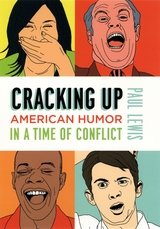 | Cracking Up: American Sense of humor in a Fourth dimension of Conflict
Paul Lewis
Academy of Chicago Press, 2006
Library of Congress PS438.L49 2006 | Dewey Decimal 817.509 What do Jon Stewart, Freddy Krueger, Patch Adams, and George W. Bush have in mutual? As Paul Lewis shows in Swell Up, they are all among the ranks of joke tellers who aim to exercise much more than simply amuse. Exploring topics that range from the sadistic mockery of Abu Ghraib prison house guards to New Historic period platitudes nigh the healing ability of laughter, from jokes used to ridicule the possibility of global climatic change to the heartwarming performances of infirmary clowns, Lewis demonstrates that over the past thirty years American humour has become increasingly purposeful and embattled. Navigating this contentious world of controversial, manipulative, and agonizing laughter, Cracking Upwardly argues that the proficient news most American humor in our fourth dimension—that information technology is delightful, relaxing, and distracting—is as well the bad news. In a culture that both enjoys and quarrels about jokes, humor expresses our most nurturing and hurtful impulses, informs and misinforms us, and exposes as well as covers up the shortcomings of our leaders. Wondering what's so funny virtually a civilization determined to laugh at problems information technology prefers not to face, Lewis reveals connections betwixt such seemingly unrelated jokers equally Norman Cousins, Hannibal Lecter, Rush Limbaugh, Garry Trudeau, Jay Leno, Ronald Reagan, Beavis and Butt-Head, and Bill Clinton. The result is a surprising, alarming, and at times hilarious argument that will appeal to anyone interested in the ways humor is changing our cultural and political landscapes. Expand Description | 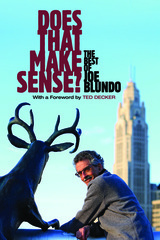 | Does That Brand Sense?: The Best of Joe Blundo
Joe Blundo
The Ohio Country University Printing, 2019
Library of Congress PS3602.L8835A6 2019 | Dewey Decimal 814.half-dozen Joe Blundo began his writing career at theColumbus Accelerationin 1978 and has been writing virtually Columbus e'er since. In 1997, Joe was given his own cavalcade titled "Then to Speak," which quickly became one of the most popular sections of the newspaper. Raccoon dinners, Abe Lincoln impersonators, and things in nature that aren't fair are merely a few of the topics Blundo explores in this drove of thebest of his newspaper columns. The columns range from hilarious to poignant to indignant—merely all incorporate his unique voice and somewhat tilted fashion of looking at life. He's especially drawn to the quirks that make Columbus what it is, people with a passion they can't stop talking nearly, and recording the milestones in his family's life. Sometimes he spouts off on the big issues of the twenty-four hours but more often he looks for the little things that others might not detect. Expand Description | 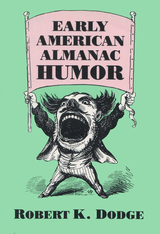 | Early American Almanac Sense of humour
Smith
University of Wisconsin Press, 1987
Library of Congress PS533.E27 1987 | Dewey Decimal 817.208 | 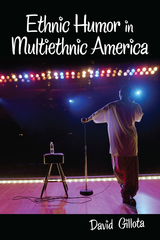 | Ethnic Humor in Multiethnic America
Gillota, David
Rutgers Academy Printing, 2013
Library of Congress PN6149.E83G55 2013 | Dewey Decimal 818.60208 When wielded by the white majority, indigenous humor can be used to ridicule and demean marginalized groups. In the easily of ethnic minorities themselves, ethnic humor tin can work as a site of community building and resistance. In nearly all cases, withal, ethnic humour can serve as a window through which to examine the complexities of American race relations. In Ethnic Sense of humor in Multiethnic America, David Gillota explores the ways in which contemporary comic works both reflect and participate in national conversations about race and ethnicity. Gillota investigates the way in which diverse humorists answer to multiculturalism and the increasing diversity of the American population. Rather than looking at i or two ethnic groups at a time—as is common scholarly practise—the book focuses on the interplay between humorists from different ethnic communities. While some comic texts project a fantasy earth in which diverse ethnic characters coexist in a rarely disputed harmony, others genuinely engage with the complexities and contradictions of multiethnic America. The first chapter focuses on African American one-act with a discussion of such humorists equally Paul Mooney and Chris Stone, who tend to reinforce a black/white vision of American race relations. This approach is contrasted to the comedy of Dave Chappelle, who looks beyond black and white and uses his sense of humor to place black within a much wider multiethnic context. Affiliate 2 concentrates primarily on the Jewish humorists Sarah Silverman, Larry David, and Sacha Baron Cohen—three artists who employ their personas to explore the peculiar position of contemporary Jews who be in a heart space between white and other. In affiliate iii, Gillota discusses dissimilar humorous constructions of whiteness, from a detailed analysis of Southward Park to "Blue Collar Comedy" and the blog Stuff White People Like. Chapter 4 is focused on the style in which animated children's film and the network situation comedy often project simplified and harmonious visions of diversity. In dissimilarity, chapter 5 considers how many contempo works, such every bit Harold and Kumar Go to White Castle and the Showtime series Weeds, appoint with multifariousness in more than complex and productive means. Expand Description |  | Fetching the Quondam Southwest: Humorous Writing from Longstreet to Twain
James H. Justus
University of Missouri Press, 2004
Library of Congress PS437.J87 2004 | Dewey Decimal 641.5976 For more a quarter-century, despite the beauteous excavations that accept unearthed such humorists as John Gorman Barr and Marcus Lafayette, the most significant of the humorists from the Old Southwest have remained the same: Crockett, Longstreet, Thompson, Baldwin, Thorpe, Hooper, Robb, Harris, and Lewis. Forming a kind of shadow canon in American literature that led to Mark Twain's early work, from 1834 to 1867 these authors produced a body of writing that continues to reward circumspect readers. James H. Justus's Fetching the Old Southwest examines this writing in the context of other discourses contemporaneous with it: travel books, local histories, memoirs, and sports manuals, likewise every bit unpublished private forms such as personal correspondence, daybooks, and journals. Like most writing, humor is a product of its place and fourth dimension, and the works studied herein are no exception. The antebellum humorists provide an important expect into the social and economic atmospheric condition that were prevalent in the southern "new country," a identify that would, in time, become the Deep Southward. Justus'southward report focuses mainly on the sense of humour from the area categorized in the federal censuses of the mid-nineteenth century as the Southwest: Alabama, Mississippi, Louisiana, Kentucky, Tennessee, and, eventually, Arkansas and Texas. Where it is pertinent, he too includes North Carolina and Missouri in this cultural map. Although some of these pieces may not precisely reverberate their cultural setting, they are assuredly refractions of it. While previous books about Old Southwest humor take focused on individual authors, Justus has produced the offset disquisitional study to encompass all of the humor from this time period. Teachers and students of literary history will capeesh the incredible range of documentation, both primary and secondary. Expand Description |  | Gender Play in Marker Twain: Cross-Dressing and Transgression
Linda A. Morris
University of Missouri Press, 2007
Library of Congress PS1338.M67 2007 | Dewey Decimal 818.409 Huckleberry Finn dressing as a girl is a famously comic scene in Marking Twain's novel but hardly out of character—for the author, that is. Twain "troubled gender" in much of his otherwise traditional fiction, depicting children whose sexual identities are switched at nascency, tomboys, same-sexual practice married couples, and even a male French painter who impersonates his own fictive sister and becomes engaged to another human being. This book explores Mark Twain'south extensive use of cross-dressing across his career by exposing the substantial cast of characters who masqueraded every bit members of the opposite sex or who otherwise defied gender expectations. Linda Morris grounds her study in an understanding of the era'southward theatrical cross-dressing and changing mores and even events in the Clemens household. She examines and interprets Twain'due south exploration of characters who transgress gendered conventions while tracing the degree to which themes of gender disruption collaborate with other themes, such equally his critique of race, his business with death in his archetype "boys' books," and his career-long preoccupation with twins and twinning. Budgeted familiar texts in surprising new ways, Morris reexamines the human relationship between Huck and Jim; discusses racial and gender crossing in Pudd'nhead Wilson; and sheds new calorie-free on Twain's difficulty in depicting the most famous cantankerous-dresser in history, Joan of Arc. She also considers a number of his later "transvestite tales" that feature transgressive figures such equally Hellfire Hotchkiss, who is hampered by her "misplaced sex." Morris challenges views of Twain that see his piece of work as reinforcing traditional notions of gender along sharply divided lines. She shows that Twain depicts cantankerous-dressing sometimes as comic or cool, other times as darkly tragic—but that even at his virtually playful, he contests traditional Victorian notions about the fixity of gender roles. Analyzing such characteristics of Twain's fiction as his fascination with details of clothing and the ever-present element of play, Morris shows us his agreement that gender, like race, is a social construction—and higher up all a performance. Gender Play in Mark Twain: Cross-Dressing and Transgression broadens our understanding of the author every bit it lends rich insight into his works. Expand Clarification | 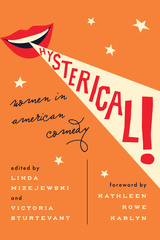 | Hysterical!: Women in American Comedy
Edited by Linda Mizejewski and Victoria Sturtevant; foreword by Kathleen Rowe Karlyn
University of Texas Press, 2017
Library of Congress PN1590.W64H97 2017 | Dewey Decimal 792.7028092 Platonic for classroom use, this anthology of original essays by the leading government on women's one-act surveys the disorderly, subversive, and unruly performances of women comics from silent film to contemporary multimedia Winner, Susan Koppleman Accolade for Best Anthology, Multi-Authored, or Edited Volume in Feminist Studies, Popular and American Culture Associations (PACA), 2017 Amy Schumer, Samantha Bee, Mindy Kaling, Melissa McCarthy, Tig Notaro, Leslie Jones, and a host of hilarious peers are killing it nightly on American stages and screens big and pocket-sized, peachy the tired stereotype that women aren't funny. But today's funny women aren't a new phenomenon—they accept generations of hysterically funny foremothers. Fay Tincher's daredevil stunts, Mae West's linebacker walk, Lucille Ball's manic slapstick, Ballad Burnett'southward athletic pratfalls, Ellen DeGeneres's tomboy pranks, Whoopi Goldberg'due south sly twinkle, and Tina Fey's acerbic wit all paved the mode for contemporary unruly women, whose comedy upends the norms and ideals of women's bodies and behaviors. Hysterical! Women in American Comedy delivers a lively survey of women comics from the stars of the silent movie theatre up through the multimedia presences of Tina Fey and Lena Dunham. This anthology of original essays includes contributions by the field's leading government, introducing a new framework for women's comedy that analyzes the implications of hysterical laughter and hysterically funny performances. Expanding on previous studies of comedians such as Mae West, Moms Mabley, and Margaret Cho, and offering the first scholarly work on comedy pioneers Mabel Normand, Fay Tincher, and Ballad Burnett, the contributors explore such topics as racial/indigenous/sexual identity, celebrity, stardom, censorship, auteurism, cuteness, and postfeminism across multiple media. Situated within the main currents of gender and queer studies, as well every bit American studies and feminist media scholarship, Hysterical! masterfully demonstrates that hysteria—women acting out and acting up—is a provocative, empowering model for women'south comedy. Expand Description | 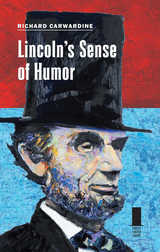 | Lincoln'southward Sense of Humor
Richard Carwardine
Southern Illinois University Press, 2017
Library of Congress E457.two.C355 2017 | Dewey Decimal 973.7092 Winner, Abraham Lincoln Institute Book Prize, 2018
Winner, ISHS Almanac Honour for a Scholarly Publication, 2018 Abraham Lincoln was the showtime president to make storytelling, jokes, and laughter tools of the part, and his natural sense of sense of humor has become legendary. Lincoln'southward Sense of Sense of humor registers the variety, complexity of purpose, and ethical dimension of Lincoln'southward humor and pinpoints the political risks Lincoln ran in telling jokes while the nation was engaged in a bloody struggle for existence. Complete with amusing anecdotes, this book shows how Lincoln's uses of humor evolved as he matured and explores its versatility, range of expressions, and multiple sources: western tall tales, morality stories, bawdy jokes, linguistic tricks, absurdities, political satire, and precipitous wit. While Lincoln excelled at self-mockery, naught gave him greater pleasure than satirical work lampooning hypocrisy and upstanding double standards. He particularly enjoyed David R. Locke's satiric writings by Petroleum 5. Nasby, a fictional narrow-minded secessionist preacher, and the volume explores the nuances of Lincoln's enthusiasm for what he called Locke's genius, showing the moral springs of Lincoln's humor. Richard Carwardine methodically demonstrates that Lincoln'southward funny stories were the means of securing political or personal advantage, sometimes by frontal assault on opponents simply more than oft by depiction through parable, obfuscation through hilarity, refusal through wit, and diversion through cunning. Throughout his life Lincoln worked to develop the humorist's craft and strop the art of storytelling. His jokes were valuable in advancing his careers as pol and lawyer and in navigating his class during a storm-tossed presidency. His merriness, however, coexisted with self-absorbed contemplation and melancholy. Humor was his lifeline; night levity acted every bit a tonic, giving Lincoln strength to tackle the severe challenges he faced. At the aforementioned time, a reputation for unrestrained, uncontrollable humour gave welcome ammunition to his political foes. In fact, Lincoln's jocularity elicited waves of criticism during his presidency. He was dismissed as a "smutty joker," a "first rate second charge per unit man," and a "joke incarnated." Since his death, Lincoln's anecdotes and jokes take become discrete from the context that had given them their political and cultural bite, losing much of the ironic and satiric significant that he had intended. With incisive analysis and laugh-inducing examples, Carwardine helps to recapture a potent component of Lincoln'due south character and reanimates the good sense of humour of our sixteenth president. Aggrandize Description |  | Of Huck and Alice: Humorous Writing in American Literature
Neil Schmitz
Academy of Minnesota Press, 1983
Library of Congress PS430.S35 1983 | Dewey Decimal 817.009 Of Huck and Alice was showtime published in 1983. Minnesota Archive Editions uses digital engineering to make long-unavailable books once again accessible, and are published unaltered from the original University of Minnesota Press editions. Huck Finn and Alice B. Toklas allow Marker Twain and Gertrude Stein to slip away from the cramped and smothery intentions of proper writing. Similar Krazy Kat, who transforms the hurt of Ignatz Mouse's brick into humorous elation, Huck and Alice brilliantly misrepresent painful authority. Every bit exemplars of humorous skepticism, Mark Twain and Gertrude Stein are at the center of this far-ranging book that begins with an test of Jacksonian dialect humor, ends with an business relationship of the humorous manner in post-modern American fiction, and considers forth the way the sugariness parlance of Krazy Kat, the meaning of Harpo Marx's silence, and the iconicity of Woody Allen's face up. Schmitz's analysis of the humorous style explores the texture of its language, discusses its preferred forms, and shows how the humorist frames his or her question inside the text. Expand Description | 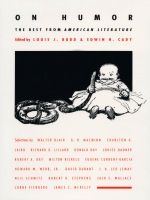 | On Humor: The Best from American Literature
Louis J. Budd and Edwin H. Cady, eds.
Duke University Printing, 1992
Library of Congress PS430.O5 1992 | Dewey Decimal 817.009 From 1929 to the latest effect, American Literature has been the foremost journal expressing the findings of those who written report our national literature. American Literature has published the best work of literary historians, critics, and bibliographers, ranging from the founders of discipline to the best current critics and researchers. The longevity of this excellence lends a special distinction to the articles in American Literature. Presented in order of their starting time appearance, the articles in each volume institute a revealing record of developing insights and important shifts of critical emphasis. Each article has opened a fresh line of enquiry, established a fresh perspective on a familiar topic, or settled a question that engaged the interest of experts. Expand Description | 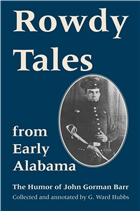 | Rowdy Tales from Early Alabama: The Humor of John Gorman Barr
John Gorman Barr
University of Alabama Printing, 1989
Library of Congress PS1074.B124R6 1981 | Dewey Decimal 813.3 The rollicking tales of Old Southwestern humor were a distinctive contribution to American folk culture provided by the frontiersmen of the Southward and Southwest, a tradition brought to its highest form in the work of Mark Twain. Among the precursors of Twain was John Gorman Barr of Tuscaloosa, Alabama. Like Twain, Barr grew upwardly in a river town, worked in a printing office, and traveled widely; and once more similar Twain, Barr drew upon the people and places of his home region as the primary sources for his tales. In add-on to the pure entertainment Barr's stories provide, they also furnish a comprehensive picture of Tuscaloosa and western Alabama in the 1850s—the roaring river town coexisting uneasily with the intellectual sophistication of the recently established University of Alabama. Expand Description | 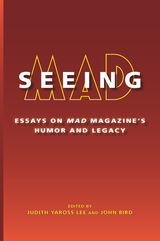 | Seeing MAD: Essays on MAD Magazine'south Humor and Legacy
Judith Yaross Lee
University of Missouri Press, 2020
Library of Congress PN6728.M33S44 2020 | Dewey Decimal 051 "Seeing Mad" is an illustrated book of scholarly essays about the pop and influential sense of humor magazine Mad, with topics ranging across its 65-year history—upwardly to last summer's downsizing proclamation that Mad will publish less new material and will be sold just in comic book shops. Mad magazine stands near the centre of post-WWII American humor, but at the periphery in scholarly recognition from American cultural historians, including sense of humor specialists. This book fills that gap, with perceptive, informed, engaging, only likewise funny essays by a multifariousness of scholars. The chapters, written by experts on humor, comics, and pop culture, cover the genesis of Mad; its editors and prominent contributors; its regular features and departments and standout examples of their contents; perspectives on its cultural and political significance; and its enduring legacy in American culture. Expand Description | 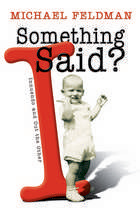 | Something I Said?: Innuendo and Out the Other
Michael Feldman
University of Wisconsin Press, 2004
Library of Congress PN6165.F45 2004 | Dewey Decimal 814.54 What we have here is another mighty slim volume from Michael Feldman, best known (when known at all) for his public radio show "Whad'ya Know" (sic). Feldman, who spouts off about things he knows "not much" nearly weekly, here writes them down:
· how to become your own radio show and what you lot can practice with information technology once y'all do
· paranoia
· wedlock (or every bit Feldman likes to refer to information technology, "a long-term bad relationship")
· Hitler
· SUVs
· kid-rearing (although it sounds like it's the author who is being reared)
· a number of short pieces on places he and his crew have visited for their "remote possibilities"
· more references to "gentiles" than absolutely necessary (seems to be an issue for Feldman, although he is tickled with the
notion that, to a Mormon, he is ane)
· some attempts to misrepresent scientific or social inquiry for humorous purposes
· many personal revelations that prove the examined life is not necessarily worth living either
· and pages and pages of fluff. Mr. Feldman has not been compared, to our knowledge, to Due south. J. Perlman. Simply here is some of what Michael Feldman says in Something I Said:
"The paranoid no longer is: paranoia has outlived its usefulness when everybody is out to get us." "Take the phrase 'no problem': I can use it, although it is the very reverse of my ii-give-and-take world view ('Naught works')." "Whatever latitude beauty may have in the eye of the beholder, funny is not readily apparent to all, and, who knows, they may exist right. More than chiefly, they may be bigger." Includes a music CD by Michael Feldman and John Sieger. Expand Description | 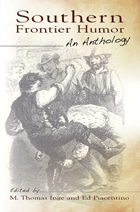 | Southern Frontier Humor: An Album
Edited past M. Thomas Inge & Ed Piacentino
University of Missouri Press, 2010
Library of Congress PS566.S48 2010 | Dewey Decimal 810.80976 If, equally some advise, American literature began with Blueberry Finn, and then the humorists of the Quondam Southward surely helped united states of america to shape that literature. Twain himself learned to write by reading the humorists' work, and later writers were influenced past information technology. This book marks the first new collection of sense of humour from that region published in 15 years—and the first fresh selection of sketches and tales to appear in over forty years. Thomas Inge and Ed Piacentino bring their cognition of and fondness for this genre to a collection that reflects the considerable trunk of scholarship that has been published on its major figures and the place of the movement in American literary history. They exhale new life into the subject, gathering a new selection of texts and adding Twain—the only major American author to contribute to and sally from the movement—as well as several recently identified humorists. All of the major writers are represented, from Augustus Baldwin Longstreet to Thomas Bangs Thorpe, as well as a bang-up many bottom-known figures like Hamilton C. Jones, Joseph One thousand. Field, and John S. Robb. The album too includes several writers just recently discovered to exist a part of the tradition, such equally Joseph Gault, Christopher Stonemason Haile, James Edward Henry, and Marcus Lafayette Byrn, and features authors previously overlooked, such as William Gilmore Simms, Ham Jones, Orlando Benedict Mayer, and Adam Summertime. Selections are timely, reflecting recent trends in literary history and criticism sensitive to problems of gender, race, and ethnicity. The editors take likewise taken pains to seek out showtime printings to avoid the kinds of textual corruptions that often occur in later versions of these sketches. Southern Frontier Humor offers students and general readers alike a broad perspective and new appreciation of this atypical form of writing from the Old South—and provides some chuckles along the way. Expand Description | 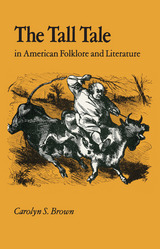 | Alpine Tale American Folklore Literature
Carolyn S. Brown
University of Tennessee Press, 1989
Library of Congress PS437.B76 1987 | Dewey Decimal 813.009 | 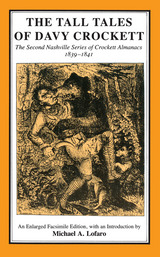 | Alpine Tales Davy Crockett: 2d Nashville Series Crockett Almanacs, 1839-1841
Michael A. Lofaro
University of Tennessee Press, 1987
Library of Congress GR105.37.D3T35 1987 | Dewey Decimal 398.220973 | 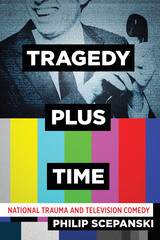 | Tragedy Plus Time: National Trauma and Television Comedy
By Philip Scepanski
University of Texas Press, 2021
Library of Congress PN1992.8.C66S3 2021 | Dewey Decimal 791.456170973 Following the about solemn moments in recent American history, comedians have tested the limits of how soon is "besides before long" to joke most tragedy. Comics face up the horrifying events and shocking moments that capture national attending and probe the acceptable, or "sayable," boundaries of expression that shape our cultural retentiveness. In Tragedy Plus Time, Philip Scepanski examines the office of humor, especially televised comedy, in constructing and policing grouping identity and retention in the wake of big-scale events. Tragedy Plus Fourth dimension is the first comprehensive work to investigate tragedy-driven one-act in the aftermaths of such traumas as the JFK assassination and nine/11, every bit well every bit during the assistants of Donald Trump. Focusing on the mass publicization of television comedy, Scepanski considers bug of censorship and retentivity structure in the ways comedians negotiate emotions, politics, war, race, and Islamophobia. Amid the media frenzy and conflicting expressions of grief following a public tragedy, comedians provoke or risk controversy to grapple publicly with national traumas that all Americans are trying to empathize for themselves. Expand Clarification |  | Transcendental Wordplay: America'southward Romantic Punsters and the Search for the Language of Nature
Michael W
Ohio Academy Printing, 2000
Library of Congress PS217.P85W47 2000 | Dewey Decimal 808.042097309034 Throughout the first half of the nineteenth century, America was absorbed by a muddled notion of "etymology." New England Transcendentalism was only ane outcropping of a nationwide movement in which schoolmasters beyond pocket-size-town America taught students the roots of words in ways that dramatized religious issues and sparked wordplay. Shaped by this ferment, our major romantic authors shared the sensibility that Friedrich Schlegel linked to punning and christened "romantic irony." Notable punsters or etymologists all, they gleefully ready as sages, creating jocular masterpieces from their zest for oracular wordplay. Their search for a primal language lurking beneath all natural languages provided them with something similar a secret linguistic communication that encodes their meanings. To fathom their essentially comic masterpieces nosotros must decipher it. Interpreting Thoreau every bit an ironic moralist, satirist, and social critic rather than a nature-loving mystic, Transcendental Wordplay suggests that the major American Romantics shared a surprising conservatism. In this award-winning study, Professor W rescues the pun from critical contempt and allows readers to enjoy it as a serious form of American sense of humor. Expand Description |  | A Very Serious Thing: Women'south Humor and American Culture
Nancy A. Walker
University of Minnesota Press, 1988
Library of Congress PS430.W3 1988 | Dewey Decimal 817.0099287 A Very Serious Thing was first published in 1988. Minnesota Archive Editions uses digital engineering science to make long-unavailable books over again accessible, and are published unaltered from the original Academy of Minnesota Press editions. "It is a very serious matter to exist a funny adult female." –Frances Miriam Berry Whitcher A Very Serious Matter is the first book-length study of a part of American literature that has been consistently neglected past scholars and underrepresented in anthologies—American women'due south humorous writing. Nancy Walker proposes that the American humorous tradition to exist redefined to include women'southward humor equally well as men'due south, because, reverse to popular opinion, women do accept a sense of humour. Her book draws on history, folklore, anthropology, literature, and psychology to posit that the reasons for neglect of women's humorous expression are rooted in a male-dominated culture that has officially denied women the freedom and self-conviction essential to the humorist. Rather than a report of individual writers, the book is an exploration of relationships between cultural realities—including expectations of "true womanhood"—and women's humorous response to those realities. Humorous expression, Walker maintains, is at odds with the culturally sanctioned ideal of the "lady," and much of women's sense of humour seems to accept, while actually denying, this ideal. In fact, most of American women'south humorous writing has been a feminist critique of American culture and its attitudes toward women, according to the writer. Expand Description | 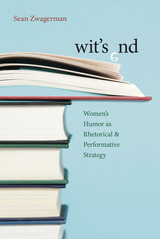 | Wit's End: Women's Humour as Rhetorical and Performative Strategy
Sean Zwagerman
University of Pittsburgh Press, 2010
Library of Congress PS438.Z89 2010 | Dewey Decimal 817.0099287 In Wit's End, Sean Zwagerman offers an original perspective on women's use of humor as a performative strategy as seen in works of twentieth-century American literature. He argues that women whose direct, explicit performative speech has been traditionally denied, or non taken seriously, accept ofttimes turned to humour as a means of communicating with men. The book examines both the potential and limits of women's sense of humor every bit a rhetorical strategy in the writings of James Thurber, Zora Neale Hurston, Dorothy Parker, Edward Albee, Louise Erdrich, and others. For Zwagerman, these texts "talk back" to important arguments in humor studies and speech-act theory. He deconstructs the use of humour in select passages by employing the theories of J. Fifty. Austin, John Searle, Jacques Derrida, Shoshana Felman, J. Hillis Miller, and Eve Kosofsky Sedgwick. Zwagerman offers arguments both for and against these approaches while advancing new thinking on sense of humour equally the "end"—both the goal and limit—of performative strategy, and as a means of expressing a full range of serious purposes. Zwagerman contends that women'southward sense of humor is not solely a subversive act, but instead it should be viewed in the total oral communication situation through context, motives, and intended audition. Not strictly a transgressive influence, women's humor is seen as both a social cosmetic and a reinforcement of established ideologies. Sense of humor has get an epistemology, an "attitude" or slant on one'due south relation to society. Zwagerman seeks to broaden the scope of performativity theory beyond the logical pragmatism of deconstruction and looks to the utilise of sense of humor in literature as a deliberate stylization of experiences plant in real-globe social structures, and every bit a tool for change. Expand Clarification | | |




















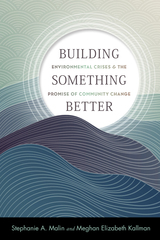
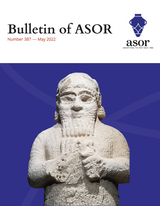

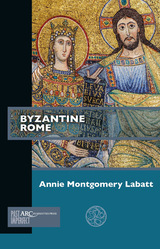
0 Response to "Chapter 5 Review Ethnic Humor in Multiethnic America"
Post a Comment